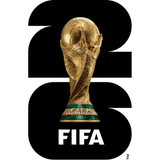
How World Cup group stage tiebreakers are decided
The men's and women's FIFA World Cup tournaments are among the most prestigious sports tournaments in the world, drawing over a billion fans every four years. Each edition kicks off with the group stage — several round-robin style tournaments. In each group, four teams square off to see which teams will advance to the knockout stage.
Only two teams can advance to the knockout round after six group games. Not only do the top two spots matter, but also the order. The second place group teams face off against the top place teams from other groups.
That's where the tiebreakers come into play. Check out the official list and order below.
How do tiebreakers work in World Cup group stages?
Here’s a breakdown of the tiebreakers factors that determine who advances to the World Cup knockout rounds:
- Group points
- Group goal difference
- Group goals scored
- Head-to-head record
- Fair play record
- Drawing of lots
Group points
To start with, teams are placed in order of total points from their three group stage matches. Teams receive three points for a win, one point for a draw, and zero for a loss.
Group goal difference
The next factor in group stage tiebreakers is group goal difference. That is the number of total goals minus the number of goals given up.
Group goals scored
If the group goal difference is equal, the number of goals given up is no longer factored into the equation and FIFA just looks at the total number of goals scored.
Head-to-head record
If two or more teams in the same group are tied in points, goal difference, and goals scored, they will then be ranked head-to-head.
If two teams are tied, you look at the one group game results. If one team won, they are ranked higher. If not, we move on to fair play record.
If three teams are tied, you rank the teams by the factors below:
- Points
- Goal difference
- Goals scored
Fair play record
The fair play record, introduced in 2014, scores teams based on penalty cards. Their values are as follows:
- Yellow card: -1 point
- Indirect red card*: -3 points
- Direct red card: -4 points
- Yellow card and direct red card: -5 points
* An indirect red card is a player being issued two yellow cards in a match
The team that has the highest score based on that point system is ranked higher.
The fair play record has only been used one time at the 2018 World Cup. In that scenario, Japan and Senegal were tied with 4 points, a goal difference of zero and 4 goals scored each. Japan advanced to the knockout stage with -4 fair play points while Senegal had -6.
Drawing of lots
At this point, we’ve all but given up on trying to separate the two teams and drawing lots is used to determine who moves on.
How does this work? Essentially, a random draw is made by an impartial member of the World Cup organizing committee. This member is not from one of the countries in question. The draw is public, and two balls are placed into a pot. The first team drawn out will be ranked higher.
This was actually used in the 1990 Men’s World Cup. The Netherlands and Republic of Ireland both had qualified for the knockout stage of the tournament, but a draw was needed in order to determine their place in the group and bracket.










